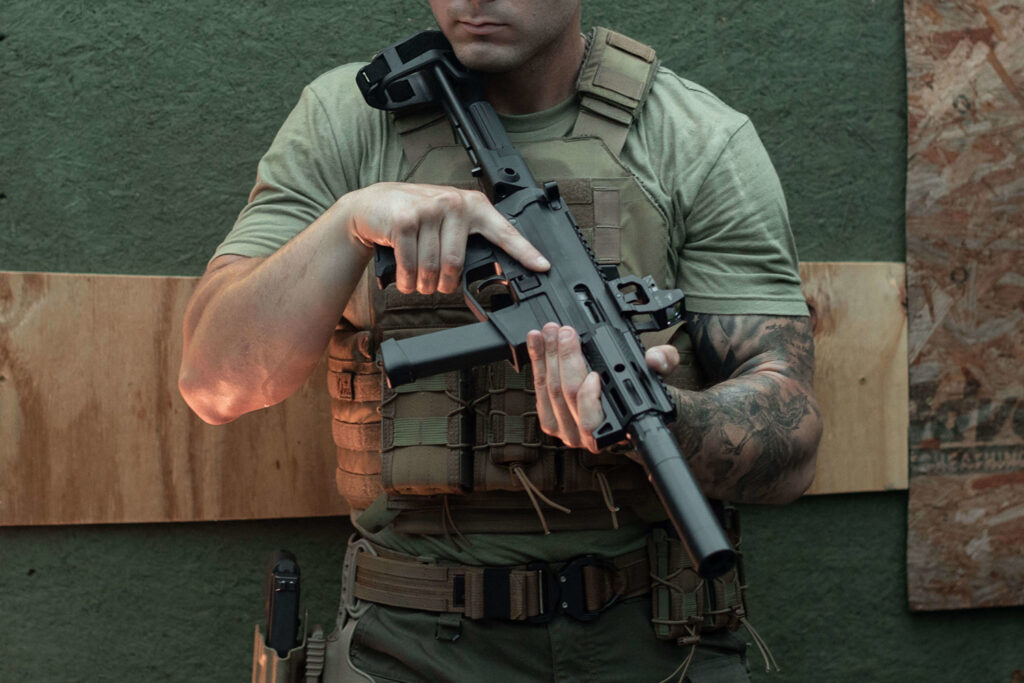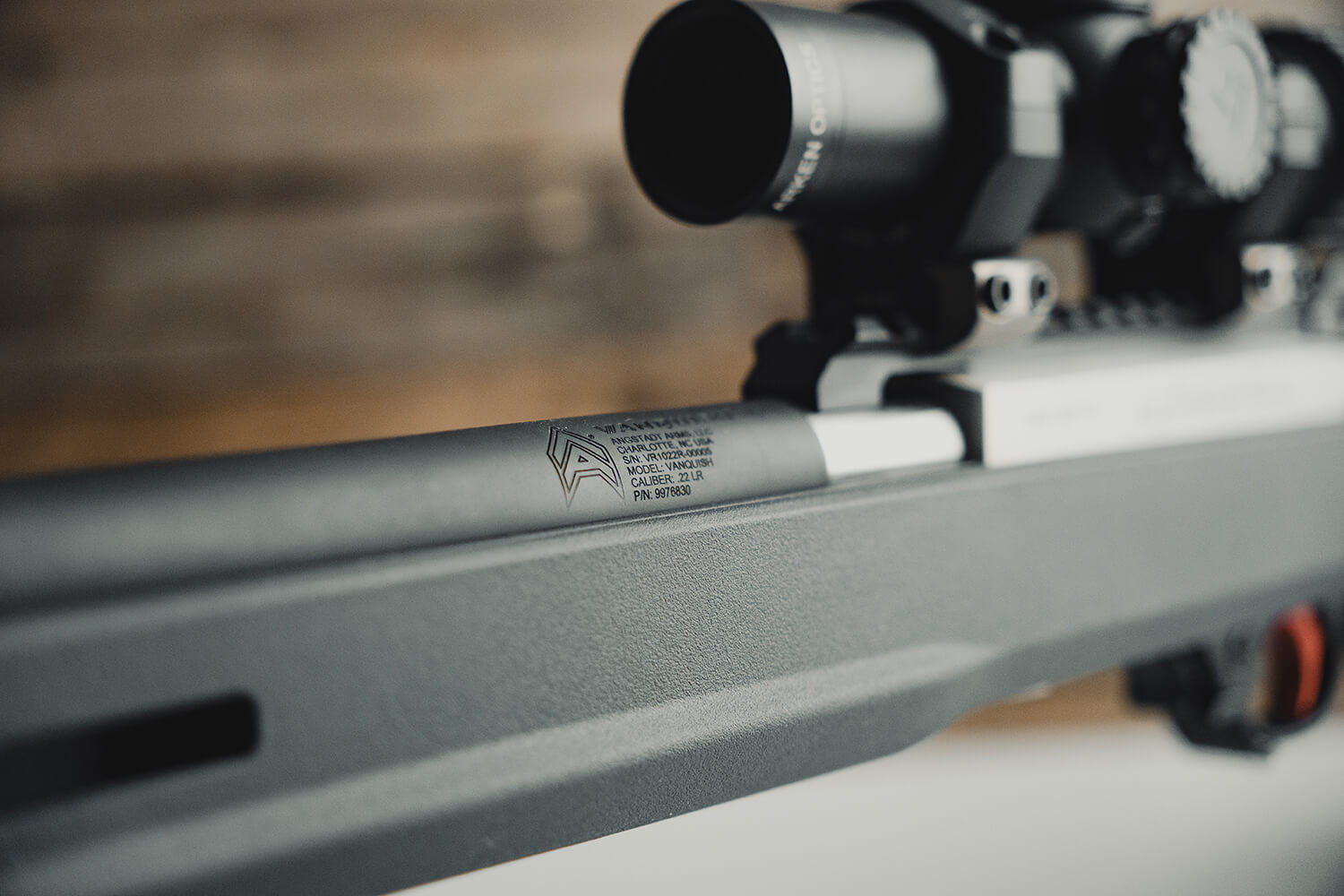Educational
Suppressor Terminology: Key Terms & Definitions
 Suppressors, also known as silencers, are incredibly handy for firearm enthusiasts, offering benefits like noise reduction, improved accuracy, and less recoil. Whether you’re a seasoned suppressor user or a newbie, getting familiar with the terminology can be super helpful. Let’s dive into some common terms associated with suppressors!
Suppressors, also known as silencers, are incredibly handy for firearm enthusiasts, offering benefits like noise reduction, improved accuracy, and less recoil. Whether you’re a seasoned suppressor user or a newbie, getting familiar with the terminology can be super helpful. Let’s dive into some common terms associated with suppressors!
What Is a Suppressor?
A suppressor, or silencer, is a device you attach to or make part of the barrel of your firearm to reduce the noise and muzzle flash when you fire. They’re popular in hunting, tactical operations, and recreational shooting because they protect your hearing and cut down on noise pollution.
Key Suppressor Terminology
Here are some key terms you should know:
Baffle
- What it is: Internal parts inside a suppressor that slow down the escaping gas from a fired round.
- Why it matters: Baffle design and arrangement are crucial for the suppressor’s efficiency and noise reduction.
Baffle Stack
- What it is: The series of baffles inside the suppressor.
- Why it matters: The baffle stack helps control and reduce the noise from the muzzle blast. Different designs can optimize performance.
Blast Baffle
- What it is: The first baffle closest to the firearm’s muzzle.
- Why it matters: This baffle faces the highest pressure and temperature, so it’s usually made from very durable materials like stainless steel or Inconel.
Decibel (dB)
- What it is: A unit for measuring sound intensity.
- Why it matters: Suppressors are rated by how much they can reduce noise, typically in decibels. A good suppressor can cut the sound of a gunshot by 20-40 dB.
Direct Metal Laser Sintering (DMLS)
- What it is: A 3D printing technique used to create complex suppressor parts from metal powders.
- Why it matters: Allows for innovative designs and precise manufacturing, enhancing performance and durability.
Direct Thread
- What it is: A method of attaching a suppressor directly to a threaded barrel.
- Why it matters: Simple and secure, but takes longer to attach and detach compared to quick-attach systems.
End Cap
- What it is: The part farthest from the muzzle that often includes threads for attachment.
- Why it matters: It helps seal the suppressor and can influence the overall length and performance.
First-Round Pop (FRP)
- What it is: An increase in noise level on the first shot fired through a suppressor.
- Why it matters: Occurs because the suppressor is filled with ambient air, which doesn’t suppress as well as the hot gases from subsequent shots. Our Vanquish is designed to eliminate this first-round pop, providing consistent noise reduction from the first shot onward.
Heat Mirage
- What it is: Visual distortion caused by heat rising from the suppressor after firing multiple rounds.
- Why it matters: Can obscure the shooter’s view through optics, but some suppressors are designed to mitigate this effect.
Integrally Suppressed Barrel
- What it is: A barrel with a built-in suppressor.
- Why it matters: Offers a sleek, compact design and often provides better noise reduction compared to attaching a separate suppressor.
Monocore Suppressor
- What it is: A suppressor with a single machined piece that serves as the baffle stack.
- Why it matters: Simpler to manufacture and clean, often providing consistent performance.
Point of Impact (POI) Shift
- What it is: A change in the bullet’s impact point when a suppressor is attached.
- Why it matters: Can affect the firearm’s balance and barrel harmonics, requiring shooters to re-zero their sights or optics.
Port Pop
- What it is: The noise created by gas escaping through the ports in a suppressor.
- Why it matters: It’s a key factor in overall noise reduction, and different designs can minimize port pop. Roller-delayed firearms are often quieter because they delay the opening of the chamber, reducing the amount of gas that escapes at high pressure. Check out our roller-delayed MDP-9 here!
Quick-Attach (QD) Mount
- What it is: A system for fast attachment and removal of the suppressor.
- Why it matters: Uses a proprietary system and often requires a compatible muzzle device like a flash hider or muzzle brake.
Subsonic Ammunition
- What it is: Ammo designed to travel below the speed of sound.
- Why it matters: Produces less noise and avoids the sonic crack, making it ideal for use with suppressors.
Supersonic Ammunition
- What it is: Ammo that travels faster than the speed of sound.
- Why it matters: Can be used with suppressors but will still produce a sonic crack, resulting in louder shots compared to subsonic ammo.
Suppressor Body
- What it is: The main outer tube or housing of the suppressor.
- Why it matters: It contains the baffles and other internal components and is typically made from materials like aluminum, steel, or titanium.
Suppressor Cover
- What it is: A heat-resistant sleeve that fits over the suppressor.
- Why it matters: Helps reduce heat mirage and protects the shooter from burns, also reduces the heat signature in tactical scenarios.
Tax Stamp
- What it is: The $200 tax paid to the ATF when purchasing a suppressor in the U.S.
- Why it matters: Required under the National Firearms Act (NFA), it’s part of the legal process for owning a suppressor.
Threaded Barrel
- What it is: A barrel with threads at the muzzle end for attaching a suppressor.
- Why it matters: Necessary for mounting most suppressors, and the threads must match for a secure fit.
User Serviceable
- What it is: A suppressor that can be disassembled and cleaned by the owner.
- Why it matters: Essential for maintaining performance, especially with rimfire suppressors that can build up more residue.
Wet Suppressor
- What it is: A suppressor that uses a liquid to enhance noise reduction.
- Why it matters: Adding liquid can provide extra sound suppression but needs more maintenance and has a limited duration of effectiveness.
Dry Suppressor
- What it is: A suppressor that works without added liquid.
- Why it matters: Easier to maintain and relies solely on its internal baffle design for noise reduction.
Booster/Nielsen Device
- What it is: A spring-loaded mechanism that helps semi-automatic pistols cycle properly with a suppressor attached.
- Why it matters: It compensates for the added weight of a suppressor, ensuring reliable operation.
Maintenance and Legal Considerations
Taking care of your suppressor ensures long-term performance and reliability. Here are some maintenance tips and legal considerations:
Cleaning
- Disassemble: Regularly disassemble your suppressor to clean the baffles and other components.
- Use Solvent: Use a firearm-safe solvent to remove carbon buildup.
- Lubricate: Lightly lubricate moving parts but avoid over-lubrication.
Inspection
- Check for Damage: Look for signs of wear or damage like cracks or erosion.
- Replace Worn Parts: Promptly replace any damaged components.
Storage
- Cool, Dry Place: Store in a cool, dry place to prevent corrosion.
- Protective Cases: Use cases or pouches to protect from physical damage during transport.
Legal Considerations
- NFA Regulations: In the U.S., suppressors are regulated under the National Firearms Act (NFA), requiring background checks, registration, and a tax stamp.
- State Laws: Be aware of state-specific laws regarding suppressor ownership and use.
- International Laws: If traveling internationally, research and comply with the destination country’s firearm laws.
All Things Considered
Understanding suppressor terminology helps you make informed decisions whether you’re buying, using, or maintaining a suppressor. From noise reduction to recoil management, knowing the ins and outs of these devices will enhance your shooting experience.
The suppressor market is always evolving, with new materials and designs improving performance. Staying informed about these developments will help you choose the best suppressor for your needs.
Happy shooting, and enjoy the many benefits that suppressors offer!

